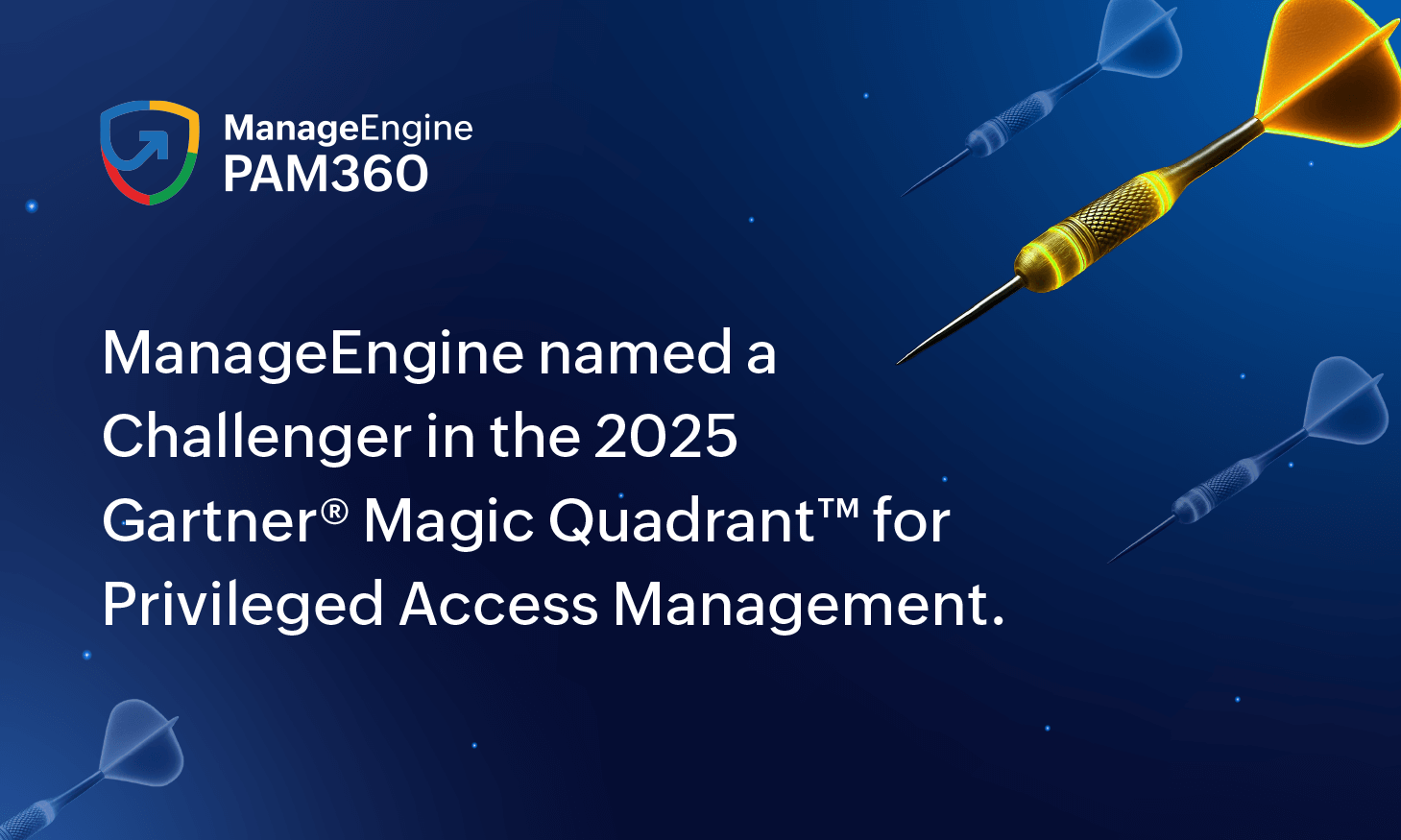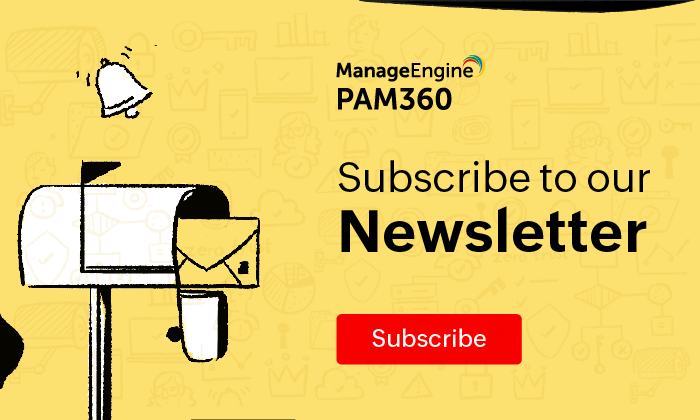- What is enterprise remote access?
- Types of enterprise remote access
- Common challenges associated with remote work
- Why is enterprise remote access important?
- The downside of VPNs
- Taking a new approach to secure remote access
- Remote access versus remote troubleshooting
- Benefits of enterprise remote access solution
- Best practices while deploying remote access solutions
- Implementing enterprise remote access with ManageEngine
What is enterprise remote access?
With employees working from home and across the globe while enterprises continue to grow, remote access solutions help organizations ensure business continuity and uphold employee productivity by allowing instantaneous and secure access to critical endpoints.
For example, a technician based out of the United States might request access to resources or attempt a file transfer process from a secondary workstation located in a different country. The user is allowed to perform this privileged action through an encrypted channel without the distance between the two endpoints being a barrier. Enterprise remote access solutions grant access to in-office resources without compromising the security of the organization's assets, offering a seamless experience for users to access their enterprise networks securely.
Types of enterprise remote access
Enterprises use different types of remote access solutions based on their requirements. Let's delve into the traditional remote access models that help access resources within enterprise perimeters.
- 01.
Virtual private network (VPN):
Virtual private networks (VPNs) are a popular and traditional method of remote access through which employees can use a secure tunnel to access private enterprise networks, even when on a public network.
- 02.
Secure Shell (SSH) remote access:
SSH allows users to establish a secure connection to remote endpoints without having to enter passwords.
- 03.
Zero Trust network access (ZTNA):
According to the concept of Zero Trust, user profiles are constantly validated and permissions to access enterprise assets is granted based on the merits of the requester and the requests. This also entails the concept of privileged access management (PAM), which works on the concept of access provisioning for privileged users and resources
- 04.
SSL VPN:
Enables users to connect to client-server applications, the enterprise network, and other internal network services using a browser. Irrespective of whether the network is public or not, need-based secure permission is granted to users to access particular applications.
Common challenges associated with remote work
Be it privileged insiders or external vendors, it is important for IT teams to ensure secure access to critical resources. Some of the challenges IT teams face in remote work environments include:
- Use of personal devices to carry out business operations, which can tamper with the security of the enterprise infrastructure and the confidential information it holds.
- Users accessing the organization's resources from unsecured networks, which expands the organization's attack surface.
- Lax security practices from users performing tasks like file transfers or accessing applications.
- Management of vulnerabilities.
Why is enterprise remote access important?
It is vital for every enterprise to identify and employ the right remote access solution to fortify access to its resources. Failure to do so results in security nightmares like the one faced by Florida's water treatment plant. All it took for an outsider to take over the control system was the privileges of an ex-employee that the plant failed to revoke or transfer. Weak VPN restrictions made it easy for the hacker to penetrate the network.
That raises the question, "why is privileged remote access important for an enterprise?" Deploying these tools helps enterprises:
- Secure endpoints from unauthorized access and narrow-down the attack surface.
- Prevent untoward incidents and vulnerabilities that arise due to human error.
- Combat cyberattacks on remote resources by eliminating the risk of from brute-force attacks.
- Ensure least-privilege and role-based access to resources where only authorized users are granted permissions to perform the intended tasks.
The downside of VPNs
While both VPN and remote access protocols seem to operate on similar grounds of regulating inbound and outbound traffic, they are different. A VPN simply enables access to enterprise networks or the internet. This helps users access the resources through an encrypted tunnel, which is especially important when they request access to critical information from a different geographical location. However, they have their share of risks.
If a cybercriminal breaches an employee's VPN credentials, they will gain access to the enterprise network. Additionally, providing and failing to monitor VPN access for third-party vendors increases the risk of an unauthorized user accessing information. Using a VPN can offer privacy for online activity, but there are other options that are better for security.
Taking a new approach to secure remote access
Let's look at how a secure remote access solution can help bolster the security posture of your enterprise. With a secure remote access solution, you can:
- Initiate authorized connections to remote endpoints using secure access protocols, such as SSH, RDP, and WMI RPC.
- Provide users with one-click access to geographically distributed target machines without sharing or exposing passwords.
- Keep track of user activities over the enterprise network by maintaining audits and log reports.
- Identify and terminate suspicious user activities in real-time.
Remote access versus remote troubleshooting
While remote access involves reaching out to remote devices and performing tasks from anywhere, it is often confused with remote trouble shooting.
01. Remote access

02. Remote troubleshooting

Benefits of enterprise remote access solution
Enterprise remote access offers the convenience of accessing shared enterprise resources and function on a granular basis. The following are key ways a access solution can benefit an enterprise workflow.
- Drastically reduce the physical infrastructure footprint.
- Offer controlled privileges over third-party access and help mitigate security risks.
- Allow remote workers to gain access to enterprise services.
- Allow collaborative tasks to be performed with teams dispersed across locations.
- Provide a flexible work experience for employees, thereby improving productivity.
- Adhere to compliance standards that require monitoring of privilege account activities with complete visibility of privileged sessions.
Best practices while deploying remote access solutions
Now that the importance of an enterprise remote access solution is established, let's dive into how it can help in streamlining access control strategies.
- Store credentials within a central vault and offer support for unified authentication through single sign-on (SSO).
- Enable single-click access to web applications by auto-filling credentials from the PAM360 console.
- Enforce multi-factor authentication to ensure secure access to critical endpoints.
- Enable non-admin users to auto-elevate their privileges to run and execute allow-listed applications and SSH commands.
- Secure endpoints of all types and apply granular controls over user activities to ensure that privileged tasks are carried out securely.
- Ensure transparency over business operations by auditing real-time user behaviour from using SIEM systems.
- Mitigate the risks associated with unauthorized access by enforcing least privilege controls over enterprise assets.
Implementing enterprise remote access with ManageEngine
ManageEngine PAM360 streamlines enterprise remote access and monitors administrative access to IT security systems through encrypted channels. Additionally, it regulates session management from a unified console and offers centralised protection against misuse of data by capturing every aspect of user activity. The fine-grained access policies allow enterprises to adhere to their compliance requirements and ensure that users get to access selective assets based on their needs.

